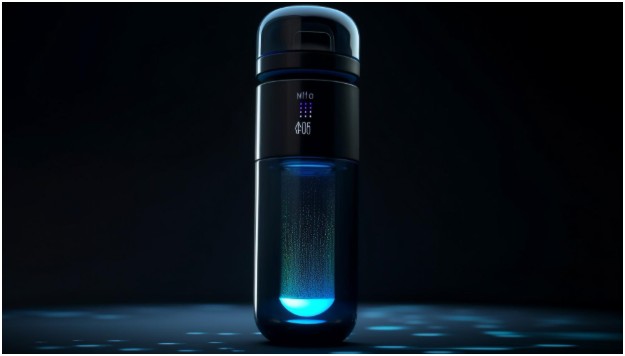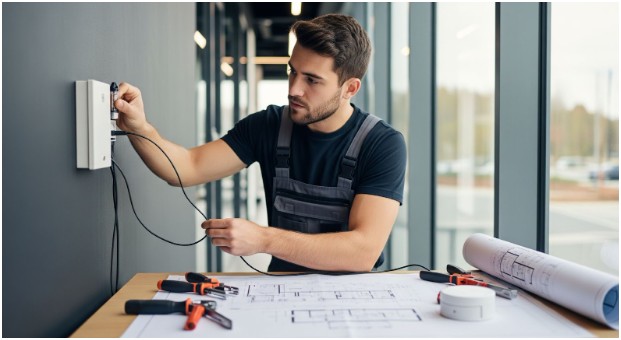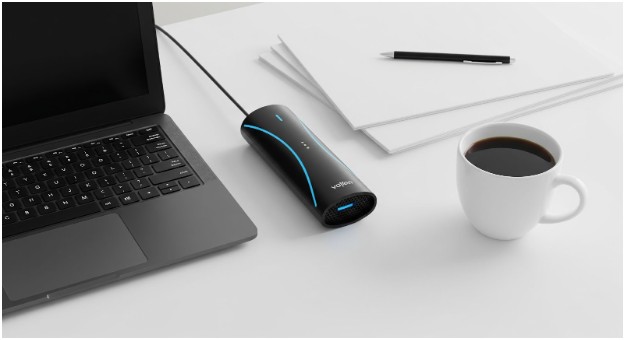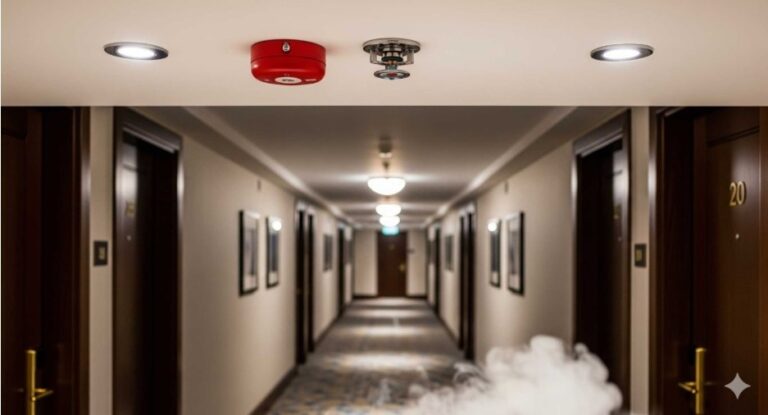A few months ago, I was at a conference for wellness professionals when someone casually mentioned that their building had installed vape detectors.
“Vape detectors?” I thought, laughing it off as something out of a sci-fi movie.
But the more I thought about it, the more intrigued I became. Vape detectors are very real and are becoming more common in public spaces like schools, offices, and even airports.
So, how do these gadgets work? What makes them so effective at detecting something as stealthy as vapor? In this post, we’re going to unpack the science behind vape detectors and how they’re making our spaces cleaner, safer, and more mindful.
What Are Vape Detectors?

Before diving into the science, let’s take a quick look at what vape detectors are and why they’ve become necessary. Simply put, vape detectors are devices designed to detect the presence of vapor in a room or environment. They use a variety of sensing technologies to identify the specific particles released when someone exhales vapor from an e-cigarette or vape pen.
Vape detectors are becoming more common in areas where smoking is not allowed. They are used in places like schools, offices, and public buildings to ensure that no one is violating smoke-free policies. The beauty of these detectors is that they are specifically tuned to detect vapor, making them more precise than general smoke detectors.
How Do Vape Detectors Actually Work?

So, now that we know what they are, let’s get into the mechanics. How do vape detectors catch the culprit? Well, the technology behind these detectors is pretty clever.
Do Vape Detectors Use Sensors for Particles?
Yes, vape detectors rely on sensors that can detect the specific particles that are emitted by vapor. When someone exhales vapor from an e-cigarette, it contains tiny particles suspended in the air. Vape detectors have sensors designed to pick up these particles. They can analyze the air in real time and immediately alert security or maintenance if vapor is detected.
The sensor technology is often based on light scattering. These sensors shine a light into the air and measure the scattering effect created when particles from the vapor disturb the light beam. If the amount of scattered light reaches a certain threshold, the sensor knows that vapor has been released, triggering an alert.
Can Vape Detectors Detect Both Nicotine and Non-Nicotine Vapor?
Most vape detectors are equipped to detect a wide range of vapors, including those that contain nicotine and those that don’t. The presence of nicotine in the vapor is one of the key factors that vape detectors look for, as nicotine is a common ingredient in most e-liquids.
However, even nicotine-free vapors, often used by people who prefer flavored vaping without nicotine, are detectable because of their particle composition.
Whether or not nicotine is present doesn’t matter much for the detector. The focus is on identifying the particles in the vapor that indicate it’s been exhaled from a vaping device.
How Are Vape Detectors Different from Smoke Detectors?

Here’s where it gets interesting. You might be wondering: Aren’t vape detectors just fancy smoke detectors? Not quite. While both types of detectors are designed to alert you to airborne substances, there are key differences.
Are Vape Detectors More Sensitive Than Smoke Detectors?
Yes, vape detectors are generally more sensitive than traditional smoke detectors because they are specifically calibrated to detect smaller, less-dense particles.
Smoke detectors are designed to detect larger smoke particles from combustion, such as those from a cigarette or fire, which are much denser and larger than the particles from vaping.
In contrast, vape detectors are designed to recognize the fine mist that comes from vapor. This requires a more precise sensor that can detect the light scattering effect from much smaller particles.
If you were to set off a traditional smoke detector with a small amount of vape, it would probably fail to trigger an alarm. But a vape detector? It’s ready to pick up even the slightest puff.
Are Vape Detectors Just for Indoor Spaces?
For the most part, vape detectors are designed for indoor environments, where the conditions allow them to function most effectively. Places like schools, office buildings, bathrooms, and even certain public transport systems are where you’re most likely to find them.
That said, outdoor environments—especially windy ones—can make it difficult for vape detectors to function properly. The particles would be dispersed in the air too quickly, and the sensors might miss them. But in controlled indoor spaces, these detectors shine.
How to Make the Most of Vape Detectors

If you’re a building manager, teacher, or just someone curious about using vape detectors in your own space, here are a few ways to make the most of them.
Understand the Placement
Vape detectors are only effective when placed in the right spots. For instance, placing them near doors or areas where people are most likely to vape can significantly increase their effectiveness. A detector in the middle of a room might not pick up vapor if it’s coming from a corner or a specific area. Make sure detectors are positioned in high-traffic areas like hallways, bathrooms, or designated smoking zones to ensure maximum coverage.
Regularly Test and Maintain the System
Like any sensor, vape detectors need regular testing and maintenance. Ensure they are cleaned frequently to avoid dust buildup, which could affect the accuracy of the sensors. Also, check the batteries or power sources to ensure they remain functional and calibrated.
Use Detectors in Combination with Clear Policies
Vape detectors are most effective when paired with clear, established policies about vaping in your space. Whether you’re managing a school, office, or public space, ensure that there’s no ambiguity about the rules regarding vaping. This makes the detection process more seamless and helps individuals understand that vaping is not permitted.
FAQ: Your Questions About Vape Detectors
1. Can vape detectors detect weed vapor?
It depends on the detector, but many modern vape detectors are calibrated to pick up a wide range of vapor types, including those from cannabis-based products. However, certain detectors may be more sensitive to nicotine-based vapors, so if you’re specifically concerned about cannabis vapor, look for detectors designed for that.
2. Can I install a vape detector myself?
In some cases, yes! Many vape detectors are designed to be user-friendly and can be installed without professional assistance. However, for more complex setups, particularly in large buildings or schools, it’s best to have a professional handle the installation to ensure everything is properly calibrated.
3. Are vape detectors foolproof?
Vape detectors are highly effective, but like any technology, they aren’t foolproof. Certain environmental factors, such as aerosols from cleaning products or other mist-based substances can trigger them. Still, they are much more accurate and precise than traditional smoke detectors when it comes to identifying vaping-related particles.
4. Do vape detectors alert people in real time?
Yes, most modern vape detectors will send real-time alerts to administrators or security personnel when vaping is detected. These alerts can be sent via mobile apps, email, or directly to building management systems, ensuring swift action can be taken.
Vaping Detection: The Future Is Here
Vape detectors are the unsung heroes of modern spaces, ensuring that your building remains free of the harmful effects of vaping. These clever devices provide a discreet yet effective solution to maintaining smoke-free environments, particularly where vaping is banned.
Whether you’re a manager or someone just curious about the tech, understanding how vape detectors work can help you embrace a healthier, safer space.









